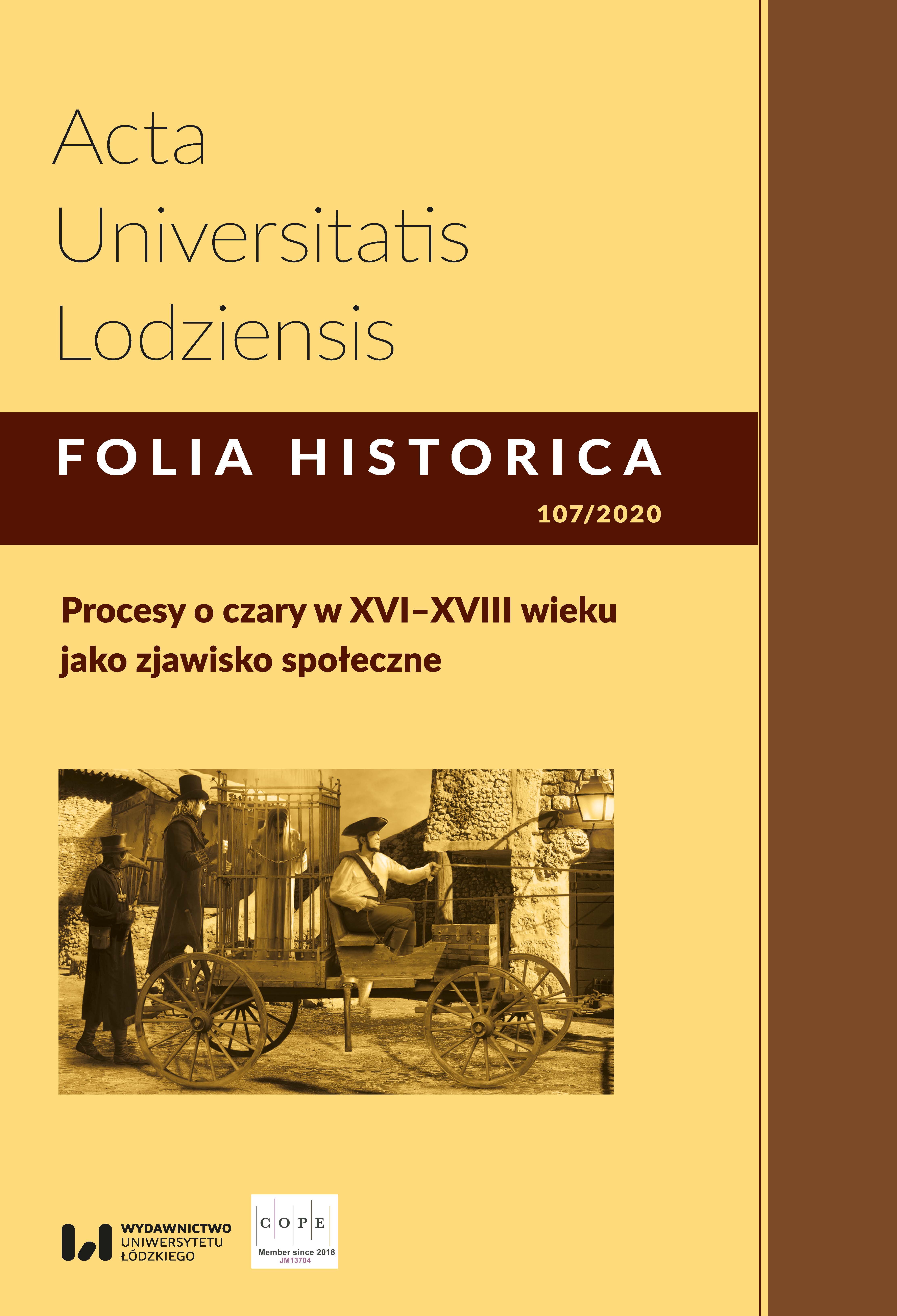Miejsca sabatów czarownic w epoce wczesnonowożytnej – ich znaczenie i topografia. Przyczynek do badań nad procesami o czary na Śląsku i Morawach
The locations of witch Sabbaths in early modern era – their significance and topographic specificity. Contributions to research on witchcraft trials in Silesia and Moravia
Author(s): Karolina WojtuckaSubject(s): History, Cultural history
Published by: Wydawnictwo Uniwersytetu Łódzkiego
Keywords: witch; wittches sabbath; witch trials; Silesia; Moravia; Petrovy Kameny; Łysa Góra; Blocksberg
Summary/Abstract: There are many stereotypes related to witches and witch trials in the public’s imagination. One of the popular elements associated to this issue is the question of the witches’ Sabbath, which the witches attended. The Sabbath itself is a collection of the fantasies of late medieval and early modern society, with specific features depending on the region. Researchers assume that the sources of the meetings that later became known as the Sabbath were those attributed to heretics who worshiped the devil during them. This meeting was characterized by a certain order of rituals and customs. They could take place not only on such characteristic days as April 30, but also a week, up to three times. According to testimonies, witches arrived at the Sabbath on broomsticks or pitchforks, and during the meeting an orgy would often take place. These meetings took place in special places, mainly on various hills. The most famous mountains, where the Sabbaths took place, are Blocksberg in the Harz Mountains, Łysa Góra, and when it comes to the border area of Silesia and Moravia – Petrovy Kameny, which appear in large numbers in the testimonies of people accused of witchcraft in this area. This place, which is located on the border of the estate, was considered to be full of the forces of darkness, therefore in 1682 it was decided to consecrate it. Very often specific areas or regions “had” their own mountain where witch meetings took place. The Sabbaths could also take place in less obvious places, e.g. in clearings, trees, road branches or near the gallows. In some cases, in memory of such meetings, characteristic names such as Hexenplan or Hexenplatz remained, which not only can be found on old maps, but also function to this day in designated areas.
Journal: Acta Universitatis Lodziensis. Folia Historica
- Issue Year: 2020
- Issue No: 107
- Page Range: 133-151
- Page Count: 19
- Language: Polish

